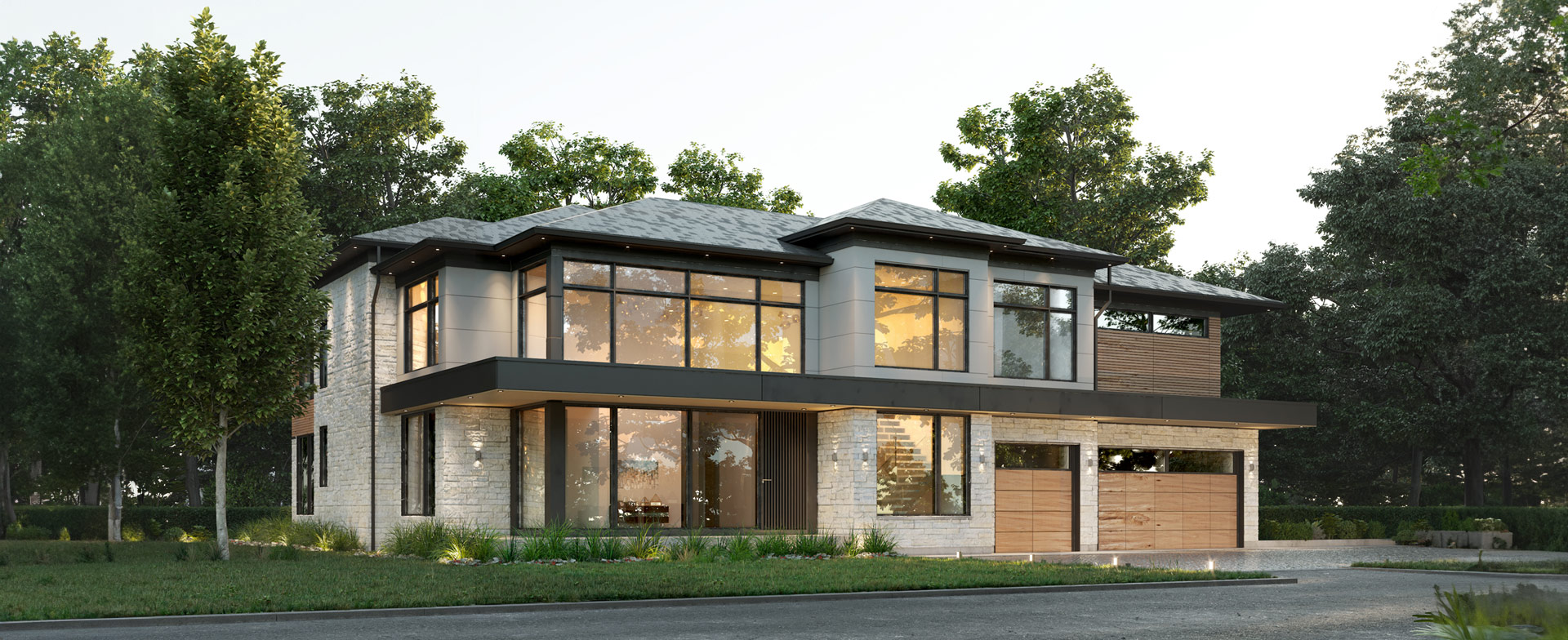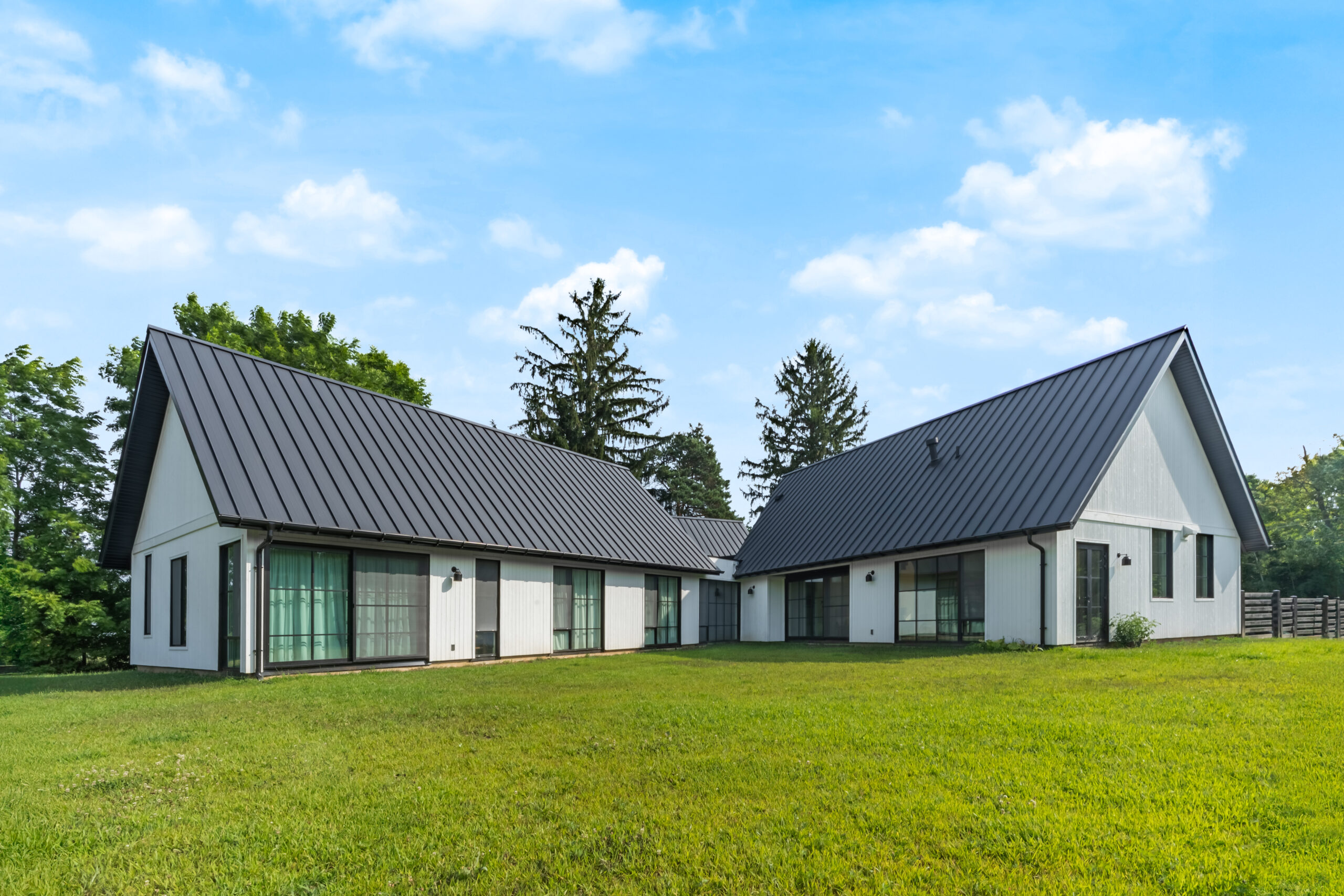
Top-Rated Custom Home Builders in Oakville 2025 Edition
Building a custom home feels thrilling and daunting all at once.
You picture morning light across your future kitchen while spreadsheets of allowances sit on your desk. The gap between inspiration photos and shovels in the ground can widen quickly without clear guidance. This guide speaks directly to Oakville families, architects, and investors ready to turn a vision into a finished address. Oakville’s lakefront charm, stable property values, and large lot sizes continue to attract clients looking for tailored homes. Working with a builder who knows the town’s permit office quirks and soil conditions keeps momentum steady. You also need cost transparency, design alignment, and craftsmanship that lasts for generations. The guidance here shows how to secure those outcomes.
What Custom Home Builders in Oakville Ontario Help You Achieve
Custom home builders in Oakville Ontario bring more than tradespeople to a site; they orchestrate every detail from zoning research to final inspection. They translate your lifestyle needs into architectural drawings that feel both inspiring and practical. Because they operate locally, they already know setbacks, heritage rules, and hidden bedrock pockets that can sway costs. That local knowledge keeps early budgets realistic and prevents late‑stage surprises.
Beyond the technical scope, an experienced builder manages emotional stress that often arises when life savings meet construction dust. Reliable scheduling, clear change‑order policies, and live project dashboards give you solid footing as choices pile up. Quality control crews check framing, insulation, and millwork against strict standards to ensure that finishes perform through harsh Ontario winters. When the final occupancy permit lands in your inbox, the road ahead feels clear because the same team stands ready for warranty care.
How Oakville Custom Builders Approach Project Scope and Design Support
Setting scope early protects both creativity and cost. Oakville custom builders start with a discovery session that listens more than it speaks. They capture priorities like multi‑generational living, universal accessibility, or future rental suites from the outset. That listening phase shapes a design roadmap that trades guesswork for data.
Early Vision Clarification With Concept Modelling
The first sketches set the tone for the entire build, so builders use 3D concept models to test scale and flow before committing to full construction drawings. Walking through a virtual kitchen or basement suite identifies traffic bottlenecks that flat plans miss. This stage also picks up daylight angles and sightline preferences that matter for rooms facing Lake Ontario. Clients leave concept reviews with print‑ready visuals they can share with family and financial partners.
Detailed massing studies follow, showing how proposed rooflines fit Oakville’s zoning height limits. Builders coordinate with surveyors to confirm tree preservation boundaries, reducing the risk of rework. Once concept approval lands, structural engineers join the conversation early rather than as an afterthought. That proactive integration keeps subsequent steps aligned and avoids costly backtracking.
Transparent Budget Alignment Through Detailed Cost Plans
A realistic budget sits at the centre of client trust. Oakville custom builders create line‑item cost plans that separate allowances from fixed pricing, giving you clarity on discretionary finishes. Soft costs such as permits, engineering, and site servicing receive equal attention, so totals reflect true out‑of‑pocket spending. Builders also include escalation contingencies based on recent lumber and insulation index data for the Greater Toronto Area.
During monthly meetings, clients receive variance reports that compare actuals against the original baseline. Digital dashboards colour‑code green, amber, and red categories to flag pressure points early. This visibility supports confident choices about splurges like accordion patio doors or imported tile. Financial transparency reduces stress and positions the project for steady financing approvals.
Collaborative Design Iterations That Balance Form And Function
Design evolves through feedback loops rather than a single presentation. Builders facilitate joint workshops with architects, interior designers, and engineers to align structure with aesthetics. Mechanical layouts receive equal attention to cabinetry, ensuring ducts and plumbing fit without awkward soffits. These workshops often reveal creative trade‑offs such as trimming attic space to fund triple‑glazed windows.
Digital mark‑ups track every adjustment so no note falls through the cracks. Clients can approve or request tweaks from any device, saving trips across town. Each iteration closes with an updated drawing set and cost implication summary for informed consent. The process keeps momentum steady while avoiding rushed decisions.
Permit Preparation And Local Compliance Guidance
Oakville’s building department expects complete submissions, and incomplete packages slow project starts. Builders assemble structural, grading, and energy compliance documents into a single electronic binder to avoid piecemeal reviews. They also liaise with conservation authorities when properties sit near creeks or shorelines. Early engagement with inspectors shortens turnaround times once shovels hit the ground.
Heritage overlays add another layer of scrutiny in pockets of Old Oakville. Experienced teams know which heritage planners value window proportions over siding materials, saving weeks of negotiation. Builders schedule neighbour notification letters to pre‑empt complaints that could stall approvals. When permits arrive, site crews can mobilize immediately because documents match the planned scope.
Integrated Scheduling And Trade Coordination
Kitchen cabinets arriving before drywall cures waste storage fees and increase damage risk. Integrated schedules map every trade to exact dates and dependencies, reducing idle time for electricians and tilers. Software tools link purchase orders to schedule milestones, so long‑lead items such as steel beams are ordered well ahead. Clear sequencing also minimizes overlap noise for neighbours, respecting local bylaws.
Weekly site meetings with framing, mechanical, and finishing leads confirm readiness before handoffs. A single point of contact from the builder packages updates for clients, avoiding conflicting reports. When weather disrupts tasks, buffers built into the critical path absorb delays without cascading into closing dates. A disciplined schedule often shaves weeks off average build durations in Oakville.
A structured approach to scope keeps the project resilient against surprises. Detailed designs, realistic budgets, and integrated schedules share equal weight in the process. Builders who follow these practices deliver spaces that look refined and perform reliably. Your confidence grows when every phase connects plainly to the next.
Key Considerations When Comparing Top Home Builders in Oakville
Comparing proposals can feel like juggling tape measures, spreadsheets, and glossy renderings. Numbers alone rarely tell the full story of craftsmanship and client care. Understanding subtle differences reduces the risk of budget overruns and strained relationships. Focusing on proven decision drivers keeps attention on value rather than noise.
- Reputation and References: Speaking with past clients uncovers how a builder manages stress when surprises surface. Consistent praise for punctual communication and site cleanliness signals professional discipline.
- Portfolio Alignment: A portfolio featuring similar architectural styles and square footage proves the team understands your preferred aesthetic. Walkthroughs of completed homes confirm finish quality and detailing.
- Communication Technology: Portals that show daily photos, schedule updates, and budget dashboards keep everyone on the same page. Real‑time insight prevents minor issues from spiralling into costly fixes.
- Craftsmanship Standards: A builder who self‑performs framing or millwork often exercises tighter control over quality. Third‑party inspections further safeguard structural integrity and energy performance.
- Warranty And Post‑Build Service: A thorough two‑year deficiency programme and seven‑year structural warranty provide safety nets long after move‑in day. Prompt responses to minor touch‑ups show commitment to relationship longevity.
- Sustainability Credentials: Builders certified under programmes such as Net Zero Ready demonstrate skill in energy modelling and airtightness detailing. Lower utility bills and healthier indoor air offer long‑term payback.
Selecting a builder should feel less like a gamble and more like a clear‑headed choice backed by evidence. Portfolio strength, communication tools, and warranty support carry weight that price alone cannot reveal. Asking precise questions around these areas uncovers alignment or misalignment quickly. Better insights support agreements that protect cost, quality, and timelines.
Common Missteps Homeowners Make When Selecting Oakville Custom Builders
Even detail‑oriented clients can overlook factors that later spark regret. Emotional excitement sometimes overrides due diligence during early meetings. Time pressure from financing or lot closing dates can push rushed decisions. Recognising frequent pitfalls keeps the selection phase calm and disciplined.
- Chasing The Lowest Bid: Cutting corners on price often means weaker project management and underpaid trades. Hidden extras later eclipse the initial savings.
- Ignoring Communication Fit: A builder may create stunning homes but still clash with your preferred meeting rhythm. Mismatched communication styles lead to confusion and frustration.
- Overlooking Allowance Realism: Small allowances for fixtures and tile set unrealistic expectations for finish quality. Accurate allowances safeguard both design intent and final cost.
- Skipping Site Visits: Signing a contract without touring active jobsites misses chances to assess safety practices and workmanship firsthand. Clean, organised sites indicate respect for both workers and neighbours.
- Assuming All Permits Are Equal: Not all builders manage complex permits with the same diligence. Permit delays can freeze progress and erode goodwill with lenders.
- Neglecting Post‑Build Care Questions: Warranty service often distinguishes average and exceptional builders. Lack of clarity on response times and coverage leaves owners vulnerable.
Avoiding these missteps shortens the learning curve and shields the budget. An honest appraisal of each builder’s processes prevents surprises midway through construction. Careful vetting nurtures a partnership founded on mutual respect and transparency. When expectations align early, the path to move‑in day feels steady and predictable.
What Oakville Homeowners Should Ask Before Signing a Custom Build Contract
A contract sets the tone for every site meeting, invoice, and progress draw. Clear clauses protect both the homeowner and builder from ambiguity. Asking targeted questions surfaces any grey areas before money changes hands. Strong contracts foster collaboration and keep goodwill intact throughout the project.
How Is The Fixed Price Or Allowance Structured
Fixed‑price components cover items with known quantities, such as framing labour and concrete, locking cost risk to the builder. Allowances cater to selections that fluctuate, like plumbing fixtures and flooring. Knowing the ratio between fixed and allowance figures reveals how much pricing certainty you possess. Builders willing to share supplier quotes increase confidence in allowance fairness.
Ask how unused allowance balances are credited and how overages are billed. A clear policy on markup percentages safeguards you from hidden profit layers. Confirm if allowances include taxes and delivery to avoid mid‑project add‑ons. Having this clarity early prevents tense budget renegotiations later.
What Is The Change Order Process And Cost Impact
Even the most detailed drawings evolve once walls rise. Change‑order processes should specify written approval steps and pricing timelines. Builders who price changes promptly allow you to decide before work progresses too far. Real‑time costing keeps financial control in your hands.
Clarifythe administrative fees applied when the scope shifts. Some builders cap overhead percentages on change orders to maintain goodwill. Ask about time impacts, as a simple tile swap can delay multiple trades. When impacts are transparent, you can balance desire against schedule.
Which Insurances And Warranties Cover The Build
Builders carry general liability insurance to protect against property damage and injury claims. A copy of the certificate with your name as additional insured offers peace of mind. Worker compensation coverage for subcontractors prevents future liens against your property. These policies serve as a safety net for unforeseen events.
Ontario’s Tarion warranty programme mandates minimum coverage for structural issues, water penetration, and workmanship. Ask how the builder exceeds those baselines with extended manufacturer warranties on roofing or windows. Warranty claims protocols should outline contact channels and response times. Clear coverage keeps service friction low after you move in.
How Will Communication Milestones Be Tracked
Weekly update cadences ensure questions are answered before minor issues escalate. Builders using cloud‑based project management platforms create centralised records for selections, approvals, and photos. Shared calendars flag inspection dates and payment draws, aligning everyone on key milestones. Consistent communication keeps stress manageable.
Confirm who prepares meeting minutes and how action items are documented. Quick access to drawings and correspondence removes guesswork. Establish preferred channels such as email, phone, or portal messages to suit your style. Mutual clarity improves response speed and keeps projects on track.
What Post Occupancy Support Is Provided
Settling cracks, seasonal door adjustments, and HVAC balancing can surface within the first year. Builders offering scheduled service visits handle these items proactively. Digital ticketing systems track requests and confirm completion dates. Proactive care nurtures long‑term satisfaction.
Ask how emergency issues are handled during holidays or weekends. A direct phone number for urgent situations demonstrates commitment beyond closing day. Builders who retain digital records of your selections and warranties resolve issues faster. Comprehensive support protects both resale value and daily comfort.
Detailed answers to these contract questions protect you from costly misunderstandings. They also test the builder’s willingness to address tough topics with candour. A builder who responds clearly signals preparedness and professionalism. Signing the contract then feels like a confident step rather than a leap of faith.
How Working With Local Oakville Builders Improves Communication and Timelines
Local builders hold relationships with Oakville inspectors, trade suppliers, and specialty contractors that outsiders often lack. Quick callbacks from familiar inspectors can shave days off inspection scheduling. Established supplier accounts keep materials flowing even during allocation crunches. Those network advantages translate directly into shorter build durations.
Face‑to‑face meetings are easier when the builder’s office sits minutes from your lot. Site supervisors can address issues the same day instead of commuting across the region. Local crews respect neighbourhood bylaws on parking and noise, reducing friction with neighbours. Familiarity with town standards streamlines every decision from fence height to sewer connections.
How Sustainable Construction Methods Are Being Applied by Oakville Builders
Many Oakville builders now specify advanced framing techniques that reduce lumber waste without sacrificing strength. Continuous exterior insulation cuts thermal bridging, lowering heating bills through harsh winters. Heat‑recovery ventilators maintain indoor air quality while capturing warmth from outgoing air. These upgrades add value by reducing operating costs and enhancing comfort.
Builders also source low‑VOC paints and formaldehyde‑free cabinetry to improve indoor health. Rainwater harvesting systems support landscape irrigation, easing pressure on municipal supply. Solar‑ready conduit plans prepare roofs for photovoltaic arrays without expensive retrofits. Sustainable choices foster long‑term durability and market appeal.
From Vision to Reality With Onelife Custom Builders in Oakville Ontario
Onelife pairs meticulous planning with transparent technology to keep every client in control from day one. Our project dashboards show budget, schedule, and progress photos in real time, eliminating unwelcome surprises. Trade partners are vetted for craftsmanship and safety, ensuring each joist, tile, and handle meets strict standards. A dedicated client liaison answers questions within one business day, so decisions never stall. That responsive culture builds calm confidence during construction.
After handover, our warranty programme schedules 30‑day, six‑month, and one‑year walkthroughs to fine‑tune comfort. Energy‑efficient building envelopes and locally sourced materials protect both the planet and your wallet. Investors appreciate documentation that supports long‑term asset value, while families enjoy spaces designed around their routines. Choosing Onelife means choosing a partner that respects your time, budget, and vision. We look forward to earning your trust on the next Oakville project.
Key Takeaways
- Custom home builders in Oakville Ontario help translate design vision into reliable outcomes by guiding everything from permits to materials.
- Clear communication, cost transparency, and schedule discipline are non-negotiable when evaluating top home builders in Oakville.
- Local knowledge offers critical advantages such as faster permitting, coordinated trades, and better compliance with Oakville-specific bylaws.
- Asking precise questions about contracts, change orders, warranties, and communication tools protects your time and investment.
- Builders who prioritise sustainability, comfort, and long-term support bring more value to families and developers alike.
Common Questions
What should I expect during the custom home building process in Oakville?
You should expect a structured process starting with design consultation, zoning reviews, detailed cost planning, and permit acquisition. From there, construction moves through defined phases such as framing, electrical, finishes, and post-build walkthroughs. A good Oakville builder communicates clearly at each milestone, helping you stay informed without being overwhelmed. You’ll also want consistent budget tracking and digital updates throughout. Local builders like Onelife simplify this process through clear documentation, skilled trade coordination, and reliable post-build support.
How long does it take to build a custom home in Oakville Ontario?
On average, a custom home build in Oakville takes 12 to 18 months, depending on scope, design complexity, and permit timelines. Factors like winter conditions, material lead times, and change orders can impact duration. Working with a builder who integrates scheduling software and maintains strong supplier relationships helps prevent avoidable delays. A realistic schedule also allows for better financial planning and peace of mind. At Onelife, our scheduling approach is backed by weekly site reviews and trade alignment to keep things moving efficiently.
How can I tell if a custom home builder in Oakville is reputable?
Look for verified client testimonials, a relevant project portfolio, and professional certifications. A reputable builder should also offer clear contracts, transparent pricing, and consistent project updates. Walkthroughs of finished homes and current job sites give insights into quality and workmanship. Ongoing communication and organized project tracking reflect a high-performing team. Onelife combines these practices with hands-on guidance to support clients from concept through completion.
Do I need an architect before contacting a custom home builder in Oakville?
Not necessarily. Many Oakville custom builders offer integrated design-build services, which include architecture, interior design collaboration, and engineering. If you already have architectural drawings, a builder can review them for constructability and budget impact. Starting with a builder early helps align design choices with costs and municipal requirements. Onelife works closely with both independent architects and in-house teams to match your needs, ensuring strong collaboration from the start.
What budget should I plan for a custom home in Oakville Ontario?
Budgets for custom homes in Oakville typically start around $300 to $500 per square foot depending on finishes, lot conditions, and complexity. Premium finishes, architectural details, and basement suites can increase this range. Accurate estimates include site prep, soft costs, and realistic allowances to avoid surprise overages. Builders offering itemized cost plans and ongoing variance reports support confident financial decisions. Onelife’s transparent budgeting ensures your project stays aligned from the first estimate to final handover.






